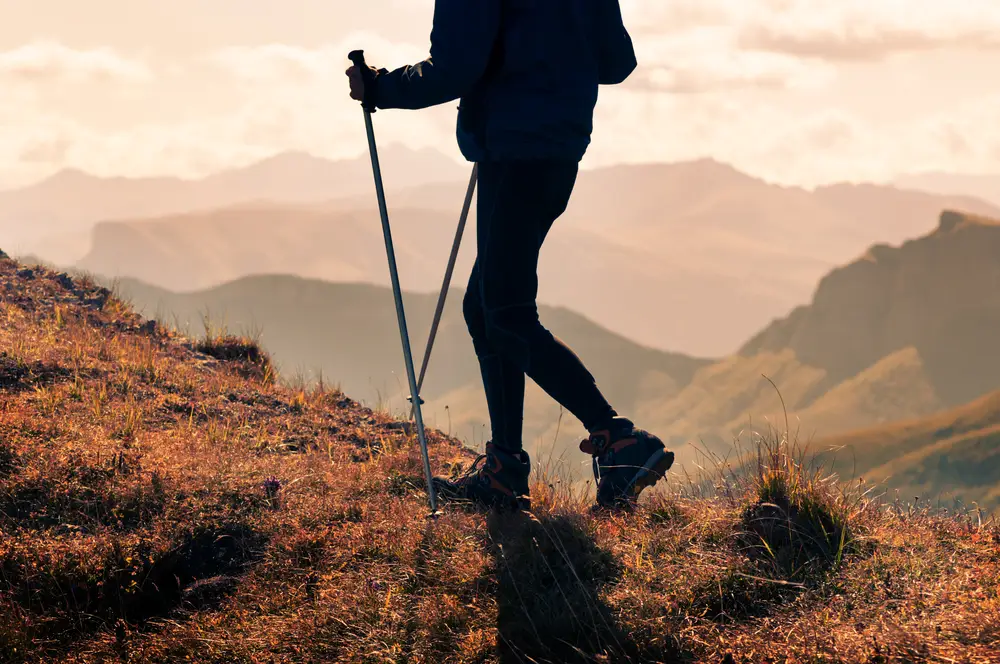Even though their numbers are smaller than men, women have always been involved in the sport of hiking. However, after the movie Wild opened in December 2014, the number of women who have taken up hiking has dramatically increased.
This is especially true on multi-state trails such as the Appalachian Trail, which runs from Georgia to Maine, and the Pacific Crest Trail, running from Southern California to Canada. Both of these trails offer breath-taking views and challenging terrain but it’s the Pacific Crest Trail which is integral to the story of of Wild.
Actress Reese Witherspoon, who, in addition to appearing in every frame of this movie as the star, is also the producer of the film and she has been nominated for Best Actress for the Academy Awards. Her co-star, Laura Dern, is nominated for Best Actress in a Supporting Role.
Because of Witherspoon’s compelling performance, many young women who have never laced up a pair of hiking boots before are now taking on these physically-demanding trails. When unskilled and possibly under-conditioned individuals take on a challenging sport, injuries usually follow. Dr. Ted Belanger, a spine surgeon with Texas Back Institute recently offered some tips on training and advice on avoiding back injuries for both women and men who decide to hike a few hundred miles. More on this later.
It’s a Wild Story
According to a January 2015 article in Mashable, “The book Wild, which has been a best-seller for nearly two years, led to a small increase in inquiries about the trail, ‘but the movie seems to have had a much bigger effect,’ said Jack Haskel, trail information specialist for the Pacific Crest Trail Association. “This past December, compared to last year, our website traffic went up 300%,” he noted.
The Pacific Coast Trail begins near Campo, California, outside San Diego at the Mexican border, and stretches 2,650 miles (4,264 kilometers) through California, Oregon and Washington. It ends in Washington’s remote Pasayten Wilderness which is a short stroll to the Canadian border.
The author of the book, Cheryl Strayed, hiked 1,100 miles of the trail as a type of recovery from drug abuse, divorce and the death of her mother. In the movie, Witherspoon plays Strayed and Dern plays Strayed’s loving but “free spirited” mother.
Here’s a brief look at some scenes from the movie, Wild.
Art Imitates Life
The story of Wild offers a realistic look at the challenges and rewards of this type of adventure. For example, Strayed ran out of drinking water, struggled through snow and rain and bloodied her feet in hiking boots which were a size too small. However, as the background information on the movie notes, “the trail’s serenity and natural beauty helped heal her damaged soul.”
As a movie fan, Dr. Belanger is of course concerned with the character’s damaged soul, but as a back specialist, he’s also interested in back injuries which might result when an untrained hiker takes on this type of physical challenge.
“As far as back injuries which might result from this type of hike, pre-existing back problems are the real concern,” he said. “If a person has any type of injury or back condition, it will certainly be exacerbated by a long hike.”
“As far as any difference in back injury risks between female or male hikers, there are really very few differences,” Dr. Belanger said. “Hiking for hundreds of miles is gender-neutral in terms of potential injury or pain.”
The most important part of the hike, at least in terms of avoiding injuries and pain later, happens before the adventure begins. Preparing for a long hike requires the same conditioning as preparing to run a marathon.
“Before starting any strenuous exercise program, it is critical to get a medical check-up,” said Dr. Belanger. “Make certain the hiker’s heart, lungs and joints can take the physical stress of the hike.”
“As far as protecting the back, build up strength over time before taking on the rugged trail. Potential hikers should work on their core strength with Pilates, yoga, interval training or other low-impact exercises,” he cautioned.
Back in December, readers of this blog met Bruce Franz, a passionate hiker in Yellowstone National Park. A successful patient of Texas Back Institute, Bruce shared his story about overcoming the back injuries that kept him from his hiking passion. Click here to read about how the trained specialists at Texas Back Institute gave him back his life on the trail!
If you are considering a long hike or any other strenuous adventure and you have concerns about how your back might react, click here for an appointment with Dr. Belanger or any other back specialist at Texas Back Institute.


